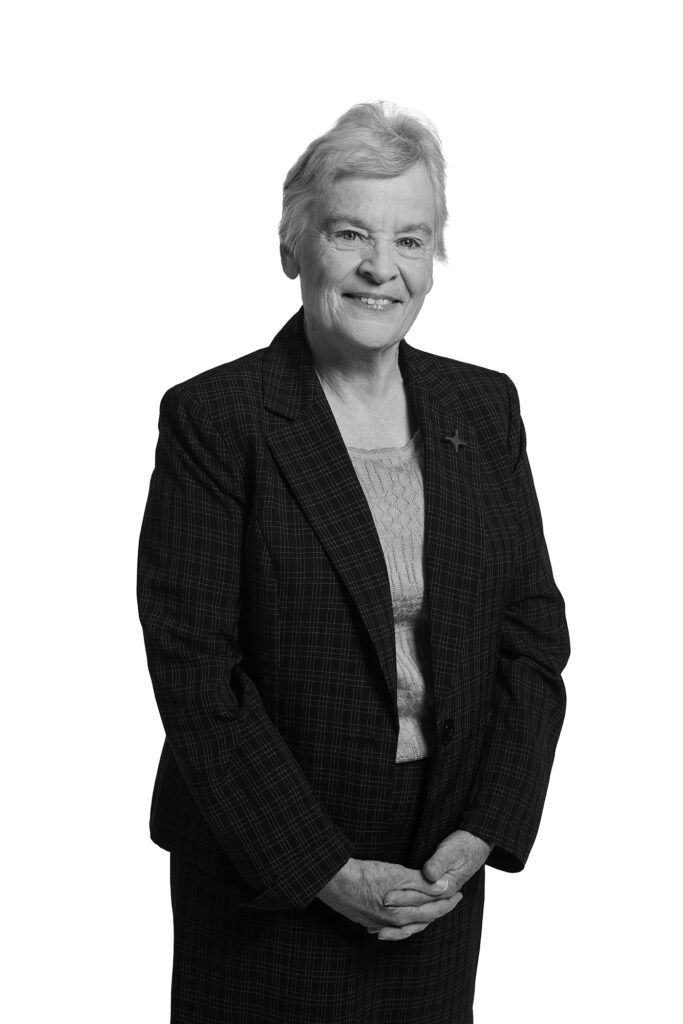Mary Beth Ingham, CSJ ’73, ’81 is one of the few people to have been a student, a professor, and a member of the Board of Trustees of Loyola Marymount University. Entering college in fall 1969, she was among the second class of women to study on the Westchester campus. We spoke with her about her experiences as she observed the merger of Marymount College and Loyola University firsthand. She was interviewed by Editor Joseph Wakelee-Lynch.

The merger brought massive change, but for you as a student did it feel like massive change or like life as usual to be on the campus with men?
For me, it was unusual because I had come from an all-girls Catholic high school. But, of course, once at LMU I knew that was going to happen. So, it’s not as if it was terribly strange. Most of our classes were co-ed classes. It seemed complicated to have two of everything. There were parallel history departments, French departments, and English departments that later merged together. There were separate treasurers, so we paid our tuition separately, and we had a separate work-study program. The only thing that was shared from the very beginning, I believe, was the Registrar’s office.
The campus was shared, but women’s and men’s residence halls were far from each other, correct?
That’s right. There was McKay Residence Hall for the women, and there were three dorms for the guys on the other side of campus — Rosecrans, Whelan, and Desmond. In between was the Sunken Gardens, an attempt to keep the boys and girls apart.
Are you saying McKay was built to keep some geographical distance between the men and women students?
That’s what we always thought, because they were on opposite sides of the campus. Of course, it didn’t stop the socializing.
I’ve seen photos of nuns who resided in Leavey. Was that the case when you were a student?
Yes. When I was a student, the second floor of Leavey had three living areas, or pods, with six bedrooms each and a common area in the middle. The Sisters of St. Joseph lived in one of those pods, and the RSHMs lived in the other two.
So, not only were the male and female students’ housing on opposite sides of campus, a group of nuns lived in between them as well, as a shield?
I never thought about that! They were never called upon to do guard duty, as far as I know!
Advocates of women’s colleges often say women benefit in those institutions because they have the opportunity to take positions of leadership and responsibility, whereas in mixed-gender settings men tend to dominate. Were co-ed classes difficult for you?
My experience in a single-sex high school prepared me to go to a coeducational university, because I never waited for someone to call on me. I always had an opinion. I taught both at a single-sex high school and a co-ed high school, and I observed what you’re describing. At the co-ed high school, I did experience the dominance of the men and the way women held back. So, I would say high school can prepare women very well to enter into a coeducational institution of higher learning.
Having lived through the merger as a student and, later, carried legal responsibilities for the institution as a trustee, what do you see as the greatest significance of the merger?
In many, many cases across the United States, men’s colleges absorbed women’s colleges, and there’s little trace of the identity of the women’s institution. Ours is a remarkable achievement, because it was so complicated at the beginning. And, it’s still in existence, not just 50 years after the merger but 55 years after the entry on campus of women. Look today at all the women we have in the administration among the deans. In a lot of ways, there has been an intercultural reality at LMU since its beginnings, and we can say the world is catching up with us. We’ve been doing this structurally, institutionally, academically, and as an educational institution for a half-century.
